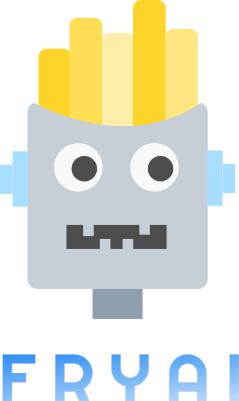- FryAI
- Posts
- YouTube protects creators from bots
YouTube protects creators from bots

Salty or savory? Either way, we’ve got you covered with AI updates so delicious that they will leave you begging for more! 🍟
🤯 MYSTERY AI LINK 🤯
(The mystery link can lead to ANYTHING AI-related: tools, memes, articles, videos, and more…)
Today’s Menu
Appetizer: YouTube protects creators from bots 👩💻
Entrée: Google steps up AI video generation 🎥
Dessert: Former Google CEO says we may need to “unplug” AI 🔌
🔨 AI TOOLS OF THE DAY
🍷 Somme (App): Your personalized wine concierge. → Check it out
🎙️ RODCast: Turn Reddit threads into podcasts. → Check it out
📽️ CleverTrend: Analyze the emotional side of any YouTube video. → Check it out
YOUTUBE PROTECTS CREATORS FROM BOTS 👩💻
Have you realized a bunch of YouTubers are getting sick lately? “Influenza” is going around all over the platform. 😆
What’s new? YouTube is introducing a new option for creators to allow third-party companies to use their videos to train AI models.
Want the details? Those who wish to opt in can do so through YouTube Studio, where they can choose from a list to allow specific companies or all third-party AI developers to access their content for AI training purposes. There are 18 companies on the initial list, including major players like OpenAI, Adobe, Microsoft, Meta, and Apple. Importantly, the default setting is off, meaning creators don’t need to take action to prevent their videos from being used. Unauthorized scraping remains prohibited.
Why is this significant? This new feature allows YouTube creators to protect ownership of their content. It’s worth noting that first-party players like YouTube and Google will still be able to use content from creators, regardless of whether they opt in. So what seems like a nice gesture for creators is a competitive advantage for YouTube against competitors. Nonetheless, this update offers creators more control and potential opportunities in the AI era. Although there is currently no compensation to content creators who allow their videos to be used for training, YouTube says this is just the beginning of new collaborations between creators and AI developers.
GOOGLE STEPS UP AI VIDEO GENERATION 🎥
Text generation —> Voice generation —> Image generation —> Video generation —> What’s next? 🤷♂️
What’s up? Google has unveiled Veo 2, the latest version of its video generation model.
Want the details? Veo 2 is able to create high resolution videos from text and image prompts. According to Google’s announcement, “Veo 2 creates incredibly high-quality videos (up to 4K resolution) in a wide range of subjects and styles.” The announcement also highlighted Veo 2’s ability to capture “an improved understanding of real-world physics and the nuances of human movement and expression, which helps improve its detail and realism overall.” This is a significant improvement compared to OpenAI’s new Sora Turbo model, as one of the biggest criticisms of Sora so far is that it cannot capture movement in a way that looks truly natural to the eye. In a test where participants reviewed over 1,000 prompts and the resulting videos, Google claims that Veo 2 outperformed Sora Turbo. According to the results, 58.8% of viewers preferred Veo 2, 26.7% favored Sora Turbo, and 14.5% were neutral. While a single benchmark can’t definitively determine the best AI video generator, these findings are a positive sign for Google’s efforts. There is currently a waitlist to access Veo 2, but in the coming year, Google plans to make the tool more widely accessible and expand it to YouTube Shorts and other products.
FORMER GOOGLE CEO SAYS WE MAY NEED TO “UNPLUG” AI 🔌
I unplugged my carbon monoxide detector from the wall today. All that beeping was giving me headaches and making me feel nauseous. 🙃
What happened? Former Google CEO Eric Schmidt has warned about the potential dangers of AI and urged humanity to prepare for a moment when stepping away from it might be necessary.
What did he say? Speaking on ABC News, Schmidt highlighted the risks of AI systems that can self-improve and eventually define their own objectives, which may not align with those of humans. Schmidt stated, “When the system can self-improve, we need to seriously think about unplugging it.” This echoes comments he has made in the past (above) about unplugging AI when agents start developing their own language and learning things we don’t understand.
“WATCH THIS” WEDNESDAY 👀
AI is being implemented into smartphones left and right, but it’s hard to keep track of which phones have which features. This video will keep you in the loop:
HAS AI REACHED SINGULARITY? CHECK OUT THE FRY METER BELOW:
What do ya think of this latest newsletter? |

